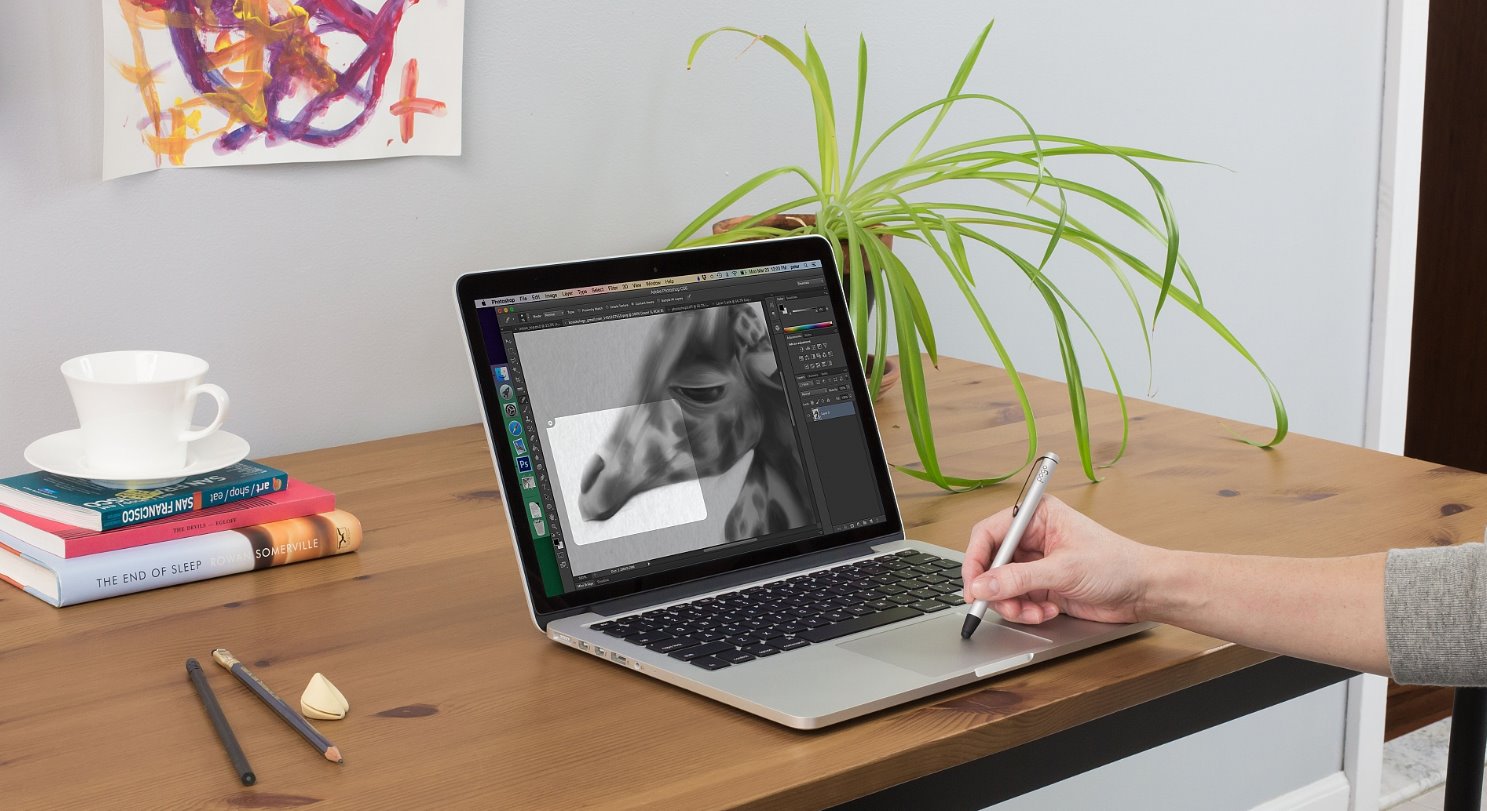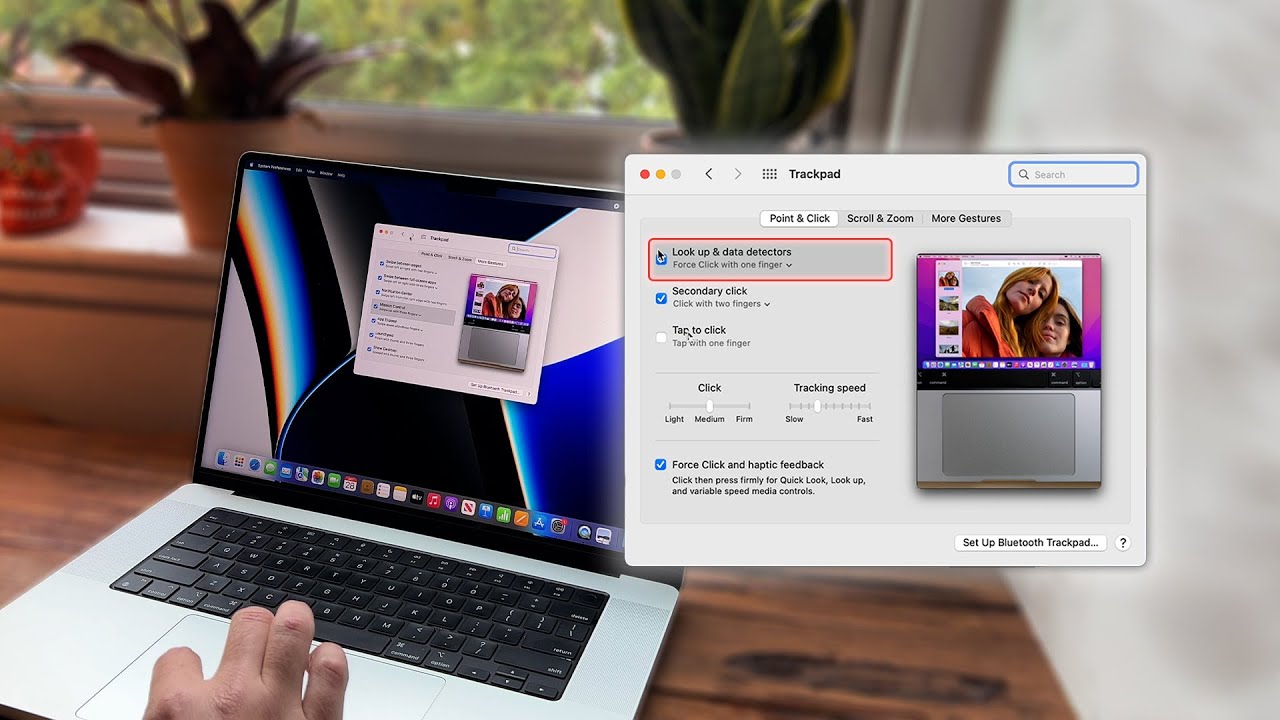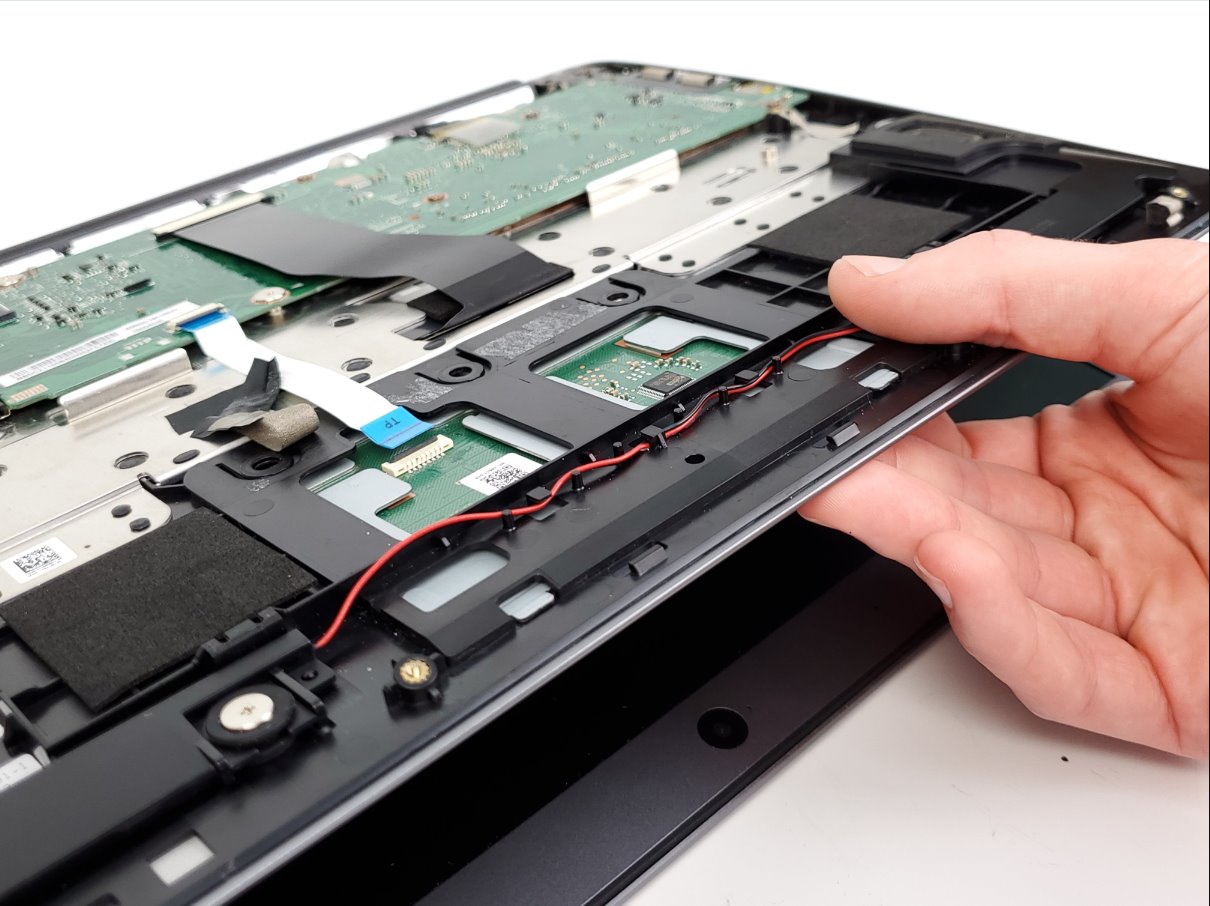Introduction
The trackpad on your device is a vital component that allows you to navigate and interact with your computer or laptop easily. It provides a convenient alternative to using a mouse and offers a wide range of gestures and functionalities for a seamless user experience.
However, you may find that the default sensitivity of your trackpad does not suit your preference or is too sensitive for your liking. Fortunately, you have the ability to change the trackpad sensitivity to better fit your needs.
In this article, we will explore the concept of trackpad sensitivity, discuss why you might want to adjust it, and provide various methods to change it. Whether you are experiencing a trackpad that is too sensitive or not responsive enough, we’ve got you covered.
By the end of this article, you will have a comprehensive understanding of how to modify your trackpad sensitivity settings and make your interaction with your device more comfortable and efficient.
Understanding Trackpad Sensitivity
Trackpad sensitivity refers to the speed and responsiveness of your trackpad’s movement and gestures. It determines how quickly or slowly your cursor moves across the screen and how sensitive the trackpad is to your touch.
Trackpad sensitivity is influenced by several factors, including hardware and software settings. The hardware component of the trackpad determines its physical sensitivity and responsiveness. On the other hand, the software settings allow you to customize and adjust the trackpad sensitivity according to your preferences.
When the trackpad sensitivity is set too high, even slight movements of your fingers can cause the cursor to move rapidly across the screen. This can lead to difficulty in accurately selecting and clicking on elements. Conversely, if the sensitivity is set too low, you may need to apply more pressure or swipe your fingers across the trackpad to achieve the desired cursor movement. This can be inconvenient and may slow down your workflow.
The optimal trackpad sensitivity will vary from person to person, depending on personal preference and the tasks being performed. Some individuals may prefer a high sensitivity for quick and precise movements, while others may find a lower sensitivity more comfortable for tasks that require precision.
It’s important to note that trackpad sensitivity can also be affected by your physical touch and the smoothness of your fingers. Dry or rough fingers may result in less responsiveness, while overly sweaty or oily fingers may cause the trackpad to register unintended movements.
Understanding the concept of trackpad sensitivity is crucial when it comes to customizing and adjusting it to meet your specific needs. In the next section, we will explore the reasons why you might want to change your trackpad sensitivity.
Why Change Trackpad Sensitivity
The default trackpad sensitivity may not always be ideal for everyone. There are several reasons why you might want to change the trackpad sensitivity to better suit your needs and optimize your user experience.
Firstly, everyone has different preferences and comfort levels when it comes to using a trackpad. Some individuals may find that the default sensitivity is too high, causing the cursor to move too quickly and making it difficult to perform precise actions. On the other hand, some people may feel that the default sensitivity is too low, requiring them to apply excessive force or exert more effort while using the trackpad.
Adjusting the trackpad sensitivity allows you to find the perfect balance that feels comfortable and responsive for your specific touch and requirements. By customizing the sensitivity, you can enhance your overall productivity and accuracy when navigating, scrolling, or performing tasks that involve gestures.
Another reason to change trackpad sensitivity is to improve ergonomics and reduce the risk of repetitive strain injuries (RSI). When trackpad sensitivity is not aligned with your natural finger movements, it can lead to unnecessary strain on your wrist and fingers. By fine-tuning the sensitivity, you can promote a more relaxed and ergonomic hand position, ultimately minimizing the risk of discomfort and potential long-term injuries.
Furthermore, adjusting the trackpad sensitivity can be beneficial if you frequently switch between applications or work on different projects that require different levels of precision. For example, tasks such as graphic design or photo editing may necessitate a lower sensitivity to achieve finer control, while general web browsing or document editing may call for a higher sensitivity for quick navigation.
Lastly, changing the trackpad sensitivity can enhance your overall user experience and make interacting with your device more enjoyable. By finding the right sensitivity that suits your touch and task requirements, you can seamlessly navigate through applications, browse the internet, and perform various actions with ease and fluidity.
Now that we have explored the reasons why you might want to change your trackpad sensitivity, let’s delve into the different methods you can use to modify it.
Ways to Change Trackpad Sensitivity
There are multiple ways to change the trackpad sensitivity on your device, depending on the operating system and settings available. Let’s explore a few methods that allow you to adjust the trackpad sensitivity to your liking.
Method 1: Through System Preferences
The most common and straightforward way to change the trackpad sensitivity is through the System Preferences on your computer. On macOS, navigate to the Apple menu, select System Preferences, and then click on Trackpad. From there, you will find options to adjust the tracking speed or sensitivity, usually represented by a slider. Dragging the slider to the left decreases sensitivity, while moving it to the right increases sensitivity.
Method 2: Using Third-Party Software
If your operating system does not provide built-in options for adjusting trackpad sensitivity or if you want more advanced customization, you can explore third-party software options. There are various applications available, such as BetterTouchTool for macOS or Touchpad Blocker for Windows, which offer extensive control over trackpad settings, including sensitivity adjustments.
Method 3: Modifying Trackpad Settings
Some devices, particularly laptops, include additional trackpad settings accessible through manufacturer-specific software or control panels. These settings can vary depending on the brand and model of your device. Explore your computer’s settings or check the manufacturer’s website for any specialized software that allows you to modify trackpad sensitivity.
Method 4: Modifying Registry Settings (Windows)
For Windows users, an alternative method involves modifying the registry settings. This method requires caution and should only be attempted if you are comfortable making changes to the Windows registry. Launch the Registry Editor by pressing Windows + R, typing “regedit” in the Run dialog box, and pressing Enter. Then, navigate to the appropriate trackpad settings within the registry and modify the sensitivity values. It is recommended to backup the registry before making any changes.
Remember to experiment with different sensitivity levels and test them in real-world scenarios to find the optimal setting that suits your needs. Keep in mind that different methods may be available depending on your device and operating system.
Now that you are aware of the various methods to change trackpad sensitivity, let’s move on to some tips that can help you adjust the sensitivity effectively and maximize your trackpad experience.
Method 1: Through System Preferences
One of the most common and straightforward ways to adjust the trackpad sensitivity is through the System Preferences on your computer. This method is specifically applicable to macOS devices. Here’s a step-by-step guide:
- Click on the Apple menu in the top-left corner of your screen and select “System Preferences.”
- In the System Preferences window, locate and click on the “Trackpad” option.
- A new window will open, showing various trackpad settings. Look for the “Tracking Speed” or “Sensitivity” slider.
- Drag the slider to the left to decrease sensitivity or to the right to increase sensitivity. As you move the slider, you can test the changes in real-time using the trackpad.
- Find the sensitivity level that feels comfortable and responsive for your touch and task requirements.
Keep in mind that the terminology and exact location of the settings may vary slightly depending on the macOS version you are using. Generally, the trackpad settings provide a visual representation of the trackpad speed or sensitivity, allowing you to adjust it according to your preference.
Take some time to experiment with different sensitivity levels to find the optimal setting that suits your needs. Test the trackpad responsiveness in various scenarios and applications to ensure it feels comfortable and allows you to work efficiently.
If you are using a Windows or Linux device, the process for adjusting trackpad sensitivity may differ. Explore the system settings or control panel specific to your operating system to find the appropriate trackpad options.
Now that you have learned how to change trackpad sensitivity through the System Preferences, let’s proceed to the next method, which involves using third-party software to modify trackpad settings.
Method 2: Using Third-Party Software
If the built-in trackpad settings on your device do not provide enough customization options or if you desire more advanced control over trackpad sensitivity, you can consider using third-party software. These applications offer additional features and settings to fine-tune the trackpad sensitivity according to your preferences. Here’s how you can use third-party software to modify trackpad sensitivity:
- Research and identify third-party software that is compatible with your operating system. Popular options include BetterTouchTool for macOS and Touchpad Blocker for Windows.
- Visit the official website of the software and download the installer.
- Once downloaded, run the installer and follow the on-screen instructions to install the software on your device.
- Launch the third-party software and explore the available settings and options.
- Look for options related to trackpad sensitivity or speed adjustment.
- Adjust the sensitivity according to your preference by either moving sliders or entering numerical values, depending on the software’s interface.
- Test the changes in real-time and make further adjustments if necessary.
One of the benefits of using third-party software is the ability to customize not only trackpad sensitivity but also other aspects such as gestures, shortcuts, and behavior. This can greatly enhance your trackpad experience and improve productivity.
It is important to note that third-party software may have additional features beyond trackpad sensitivity adjustment, so take some time to explore and experiment with the available settings to fully utilize the software’s capabilities.
Always ensure that you download third-party software from reliable sources to avoid potential security risks. Read reviews and check for recommendations from trusted sources before installing any software on your device.
Now that you are familiar with using third-party software to customize trackpad sensitivity, let’s move on to the next method, which involves modifying trackpad settings directly on the device.
Method 3: Modifying Trackpad Settings
In addition to system preferences and third-party software, some devices, particularly laptops, provide manufacturer-specific software or control panels that allow you to modify trackpad settings. These settings can offer more advanced customization options specific to your device. Here’s how you can modify trackpad settings directly on your device:
- Check if your device includes any specialized software or control panels for trackpad settings. These can typically be found in the system tray or system preferences menu.
- Access the manufacturer’s software or control panel by clicking on the corresponding icon in the system tray or by searching for it in the system preferences menu.
- Once you have accessed the software or control panel, look for options related to trackpad settings.
- Explore the available settings and customization options. These may include trackpad sensitivity, gestures, scrolling behavior, and more.
- Adjust the trackpad sensitivity according to your preference by moving sliders or entering numerical values, depending on the interface provided.
- Test the changes in real-time by using the trackpad and make further adjustments if necessary.
Modifying trackpad settings directly on your device allows you to access manufacturer-specific features and settings that might not be available through system preferences or third-party software. This can give you more control over the trackpad sensitivity and other aspects of its functionality.
Keep in mind that the availability and functionality of manufacturer-specific software or control panels can vary depending on the brand and model of your device. You may need to visit the manufacturer’s website or consult the device’s user manual for more information on accessing and modifying trackpad settings.
Now that you have learned how to modify trackpad settings directly on your device, let’s move on to the next section, which provides some tips for adjusting trackpad sensitivity effectively.
Tips for Adjusting Trackpad Sensitivity
Adjusting trackpad sensitivity can greatly improve your user experience and productivity. Here are some helpful tips to consider when fine-tuning the trackpad sensitivity on your device:
- Start with default settings: Before making any adjustments, take note of the default trackpad sensitivity settings. This will give you a baseline to compare and adjust from.
- Experiment with different sensitivity levels: Try different sensitivity levels and test them in real-world scenarios to see which one feels most comfortable and responsive for your touch and tasks.
- Consider your usage: Take into account the type of tasks you typically perform on your device. You may want a higher sensitivity for tasks that require quick navigation, while a lower sensitivity may be preferable for tasks that demand precision.
- Test with different applications: Try adjusting the sensitivity for various applications to determine if different sensitivity levels work better for specific tasks. Some applications may benefit from a different sensitivity setting to optimize your workflow.
- Take breaks and reassess: After making adjustments, take breaks and revisit the sensitivity settings. Sometimes, what feels comfortable initially may become tiring over time. Adjustments may be necessary to maintain a comfortable and sustainable level of sensitivity.
- Consider environmental factors: Keep in mind that the trackpad sensitivity can be affected by external factors such as temperature, humidity, or the texture of your fingers. Adjust the sensitivity accordingly if you notice changes in these factors.
- Regularly clean your trackpad: Accumulated dirt, oil, or smudges on the trackpad surface can affect its sensitivity. Clean your trackpad regularly using a soft, lint-free cloth to remove any debris that may interfere with its responsiveness.
- Combine sensitivity adjustments with gestures: If your device supports trackpad gestures, consider customizing gesture settings along with sensitivity adjustments to enhance your overall trackpad experience.
Remember, adjusting trackpad sensitivity is a personal preference, and what works for one person may not work for another. Be patient and willing to fine-tune the settings until you find the perfect balance that suits your needs and enhances your productivity.
Now that you are equipped with these helpful tips, you can confidently adjust the trackpad sensitivity to create a more comfortable and efficient user experience.
Conclusion
Modifying trackpad sensitivity is a simple yet effective way to enhance your user experience and make interacting with your device more comfortable and efficient. Whether you find the default sensitivity too high, too low, or simply not suited to your personal preferences, there are various methods at your disposal to make the necessary adjustments.
In this article, we explored the concept of trackpad sensitivity and discussed the reasons why you might want to change it. We covered three different methods to modify trackpad sensitivity, including adjusting settings through system preferences, utilizing third-party software, and modifying trackpad settings directly on your device.
Additionally, we provided tips to help you adjust trackpad sensitivity effectively, such as experimenting with different sensitivity levels, considering your usage and tasks, and taking breaks to reassess the settings. These tips will help you find the optimal sensitivity that suits your touch and enhances your overall productivity.
Remember to consider environmental factors, regularly clean your trackpad, and combine sensitivity adjustments with trackpad gestures for a fully customized and enjoyable user experience.
Now that you have a comprehensive understanding of trackpad sensitivity and the methods to adjust it, go ahead and fine-tune your trackpad settings to create a personalized and efficient workflow. Enjoy a smooth, responsive, and comfortable trackpad experience that elevates your overall computing experience.

























